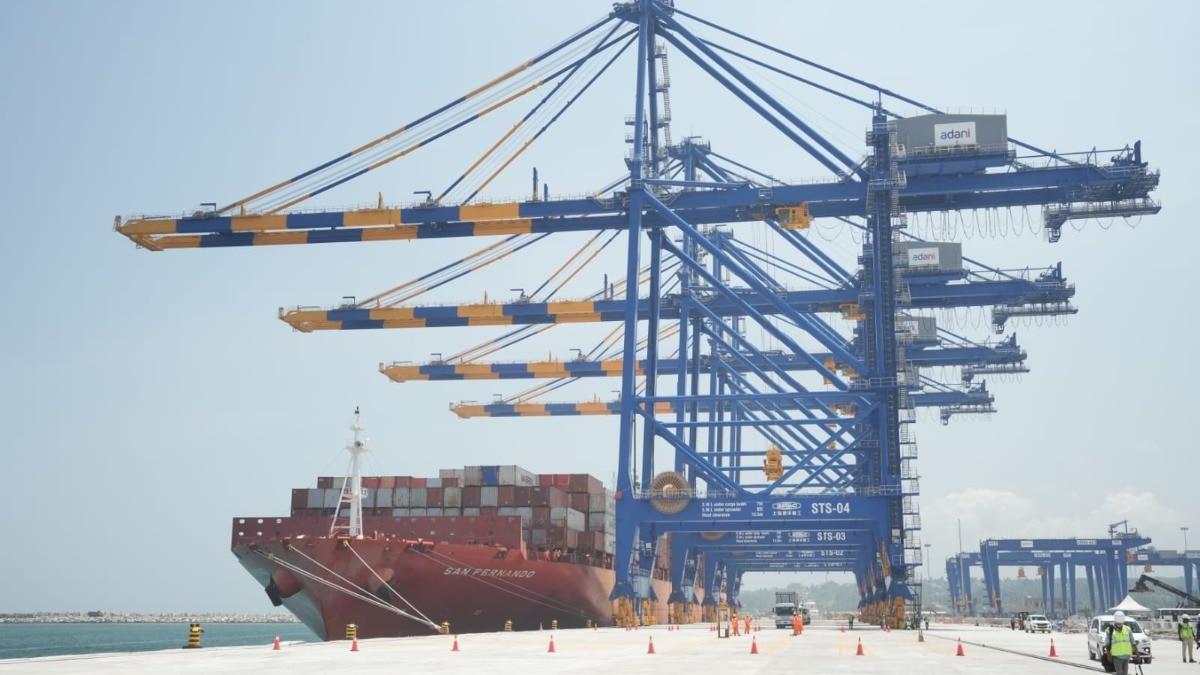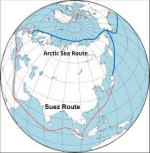Lulldapull
Senior Member
- Oct 21, 2006
- 2,194
- 1,494
- Country of Origin

- Country of Residence

I’m just wondering what India can supply Russia or Eastern Europe under territory in Russian sphere for now?
What will India supply?
Follow along with the video below to see how to install our site as a web app on your home screen.
Note: This feature may not be available in some browsers.


I’m just wondering what India can supply Russia or Eastern Europe under territory in Russian sphere for now?


Great news. Lets hope the Indians have the good sense to elect people who are talking about USD30 trillion economy rather than those talking about caste census and expropriation.
Phir ek baar! Modi Sarkaar
Regards


Medicines, "Automotive Parts", "Chemicals", "Electronic components". Quite a few things.I’m just wondering what India can supply Russia or Eastern Europe under territory in Russian sphere for now?
What will India supply?


Isn't India still having Modi government?LOL
That aged well.
I’m just wondering what India can supply Russia or Eastern Europe under territory in Russian sphere for now?
What will India supply?

NDA Sarkar.Isn't India still having Modi government?


Modi is head of NDA. So yeah, Modi government = NDA government.NDA Sarkar.
We did not have an Indira sarkar or a Manmahon sarkar or a Rajeev sarkar or a Vajpayee sarkar.Modi is head of NDA. So yeah, Modi government = NDA government.

How much of that is from Russian gas to Europe???
Ever heard of this route. Future route will be through the Arctic. Global warming is actually good for Arctic sea route. Russia will benefit a lot from it. Shorter delivery time to Europe. And most trade through the suez canal are from East Asia to Europe or the other way around. So by creating the northern sea route everyone winsView attachment 36332
India's ambition to become a manufacturing powerhouse as well as the world's factory has got a boost with a key project by Adani Group getting the government nod. Adani's Vizhinjam Port in Kerala has received the shipping ministry's approval for operating as India's first transshipment port, ET has reported. It will be India's first full-fledged deepwater transshipment port. Adani Ports and Special Economic Zone Ltd (APSEZ) had started this project at Vizhinjam in December 2015.
What is a transshipment port?
A transshipment port is a kind of transit hub where cargo from one ship is transferred to another ship on the way to its final destination. Mostly transshipment happens to transfer smaller cargos on to bigger mother ships which saves shipment cost and time. Since all the ports in the world are not directly linked, transshipment ports are needed.
There are several other reasons why transshipment is done. Often the port of origin or destination is not big enough for large vessels that ply directly between two destinations. In such a case, either cargo is sent in smaller vessels to a transshipment port to be loaded on bigger vessels or unloaded at a transshipment port onto smaller vessels which would head to the port with less depth which can't harbour large vessels. This is India's foremost reason to have a transshipment port.
Singapore, Shanghai, Shenzhen, Busan and Hong Kong are among the world's biggest transshipment ports.
Why Adani's Vizhinjam port is important for India
Located strategically between the Suez Canal and the Strait of Malacca, the port will put India on the map of global sea trade. With this port, India will be able to attract ultra-large container and cargo vessels for the first time, boosting container and cargo traffic. The Modi government is working on a Maritime India Vision 2030 that seeks to develop world-class mega ports, transshipment hubs and modernize infrastructure at an estimated investment of Rs 1.25 lakh crore. The port will also be a boost to India's ambitions to become an alternative manufacturing destination to China. Lower logistic and shipping costs and greater cargo and container capacity are beneficial for domestic manufacturers.
The port aims to handle one million containers annually, surpassing even Singapore, Kerala CM Pinarayi Vijayan has said, calling it "India's premier mother port". The port, boasting container transshipment capabilities and proximity to major shipping routes, is going to be a game-changer for Kerala's infrastructure and development, he said.
Once commissioned a few months later, the port, one of the world's biggest, will be India’s first hub for transhipment which means transferring cargo from an original ship to another, bigger mother ship at a port on the way to the cargo’s final destination. The port will provide large-scale automation for quick turnaround of vessels, with the ability to handle Megamax containerships.
The port will attract the world’s biggest container ships. Located near the southernmost tip of the country, a strategic location to tap into prominent global shipping routes, the port will allow India to grab a bigger slice of the international maritime trade currently dominated by China, Bloomberg has reported.
The proximity to the international shipping routes that account for 30% of global cargo traffic and a natural channel that goes up to 24 meters below the sea makes the port an ideal hub for some of the world’s biggest ships to call in, as per Bloomberg. Until now, the biggest container ships have been skipping India because its harbors weren’t deep enough to handle such vessels and docking at neighboring ports such as Colombo, Dubai, Singapore and Malaysia.
Poor shipping connectivity has hindered India’s integration into the global value chain, the Reserve Bank of India said in a 2022 report. India’s container traffic was only 20 million TEUs (twenty-foot equivalent unit, is a measure of volume in units of twenty-foot long containers) in 2022 versus China’s 245 million TEUs, the ports ministry in February. That makes India’s container traffic less than 10% of China’s.
The total investment over the next few years in the port will be ₹20,000 crore, Karan Adani, CEO of Adani Ports & SEZs, said on the sidelines of the inauguration of its port in Kerala. Adani plans for the port to divert transhipment traffic from neighbouring ports such as Colombo, Salalah and Singapore.
Currently, 75% of India's transshipped cargo is handled at ports outside India. Colombo, Singapore and Klang in Malaysia handle more than 85 per cent of this cargo, with more than half of it handled at Colombo port.
More transshipment hubs planned
India's aim to become a crucial part of global value and supply chains can't be achieved without a robust port infrastructure. The growth in China, which India wants to replace as the factory of the world, was made possible by ports. China has the world's busiest ports which has helped it ship an enormous amount of domestically manufactured goods to all across the world. Vizhinjam, India's first deep-water port which can accommodate bigger vessels, is a sign of India's ambition to manufacture for the world.
India is planning more transshipment hubs. The government is planning another international transhipment port project at Great Nicobar Island in the Bay of Bengal at a cost of Rs 41,000-crore. It has received expressions of interest from 11 players. The port will have the ultimate capacity to handle 16 million containers per year, and in the first phase, to be commissioned by 2028 at a cost of Rs 18,000 crore, it will handle more than 4 million containers.
The project focuses on three key drivers, which can result in making it a leading container transhipment port -- strategic location in terms of proximity (40 nautical miles) with the international shipping trade route, availability of natural water depth of over 20m and carrying capacity of transhipment cargo from all the ports in the proximity, including Indian ports.

The Arctic Sea Route is only navigable during certain months of the year due to ice conditions. Even with melting ice, the route is not accessible year-round, making it less reliable than the Malacca Strait, which is navigable throughout the year. The NSR lacks the extensive infrastructure present along traditional routes. Ports, refueling stations, and rescue services are minimal compared to those available along the Malacca Strait and Suez Canal. The costs associated with icebreaker escorts, insurance, and potential delays due to weather conditions can offset these savings.Ever heard of this route. Future route will be through the Arctic. Global warming is actually good for Arctic sea route. Russia will benefit a lot from it. Shorter delivery time to Europe. And most trade through the suez canal are from East Asia to Europe or the other way around. So by creating the northern sea route everyone wins
View attachment 61949
